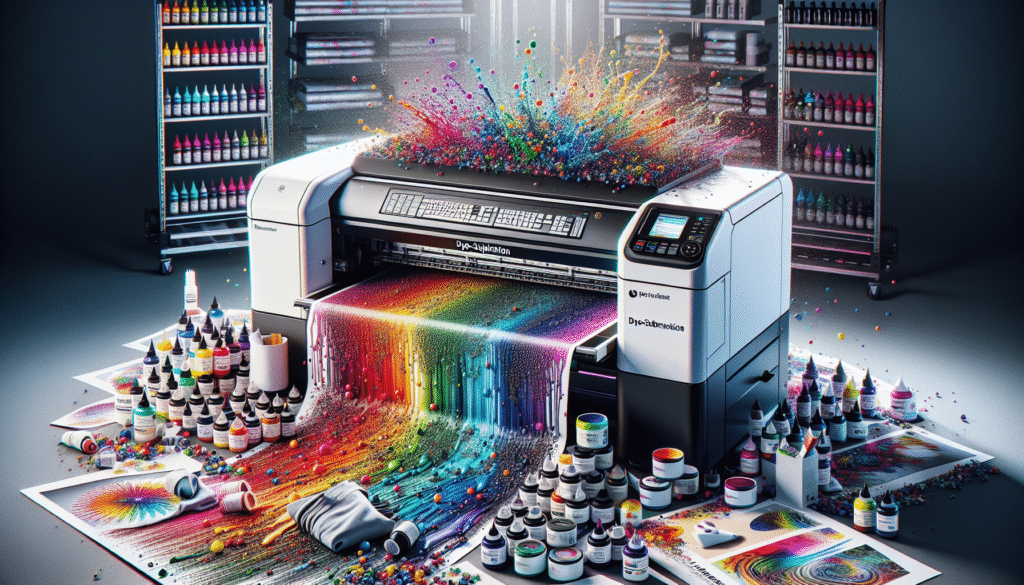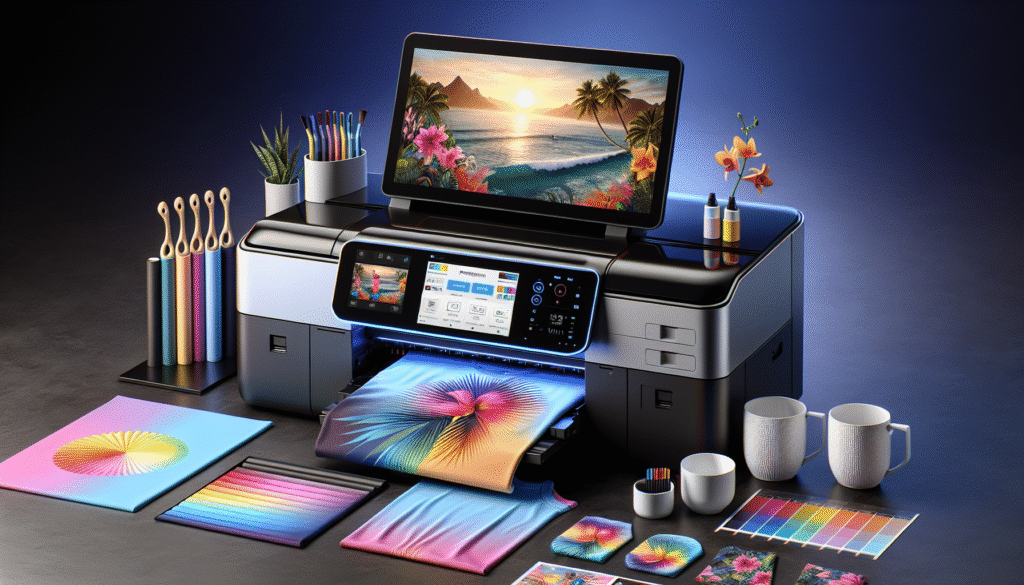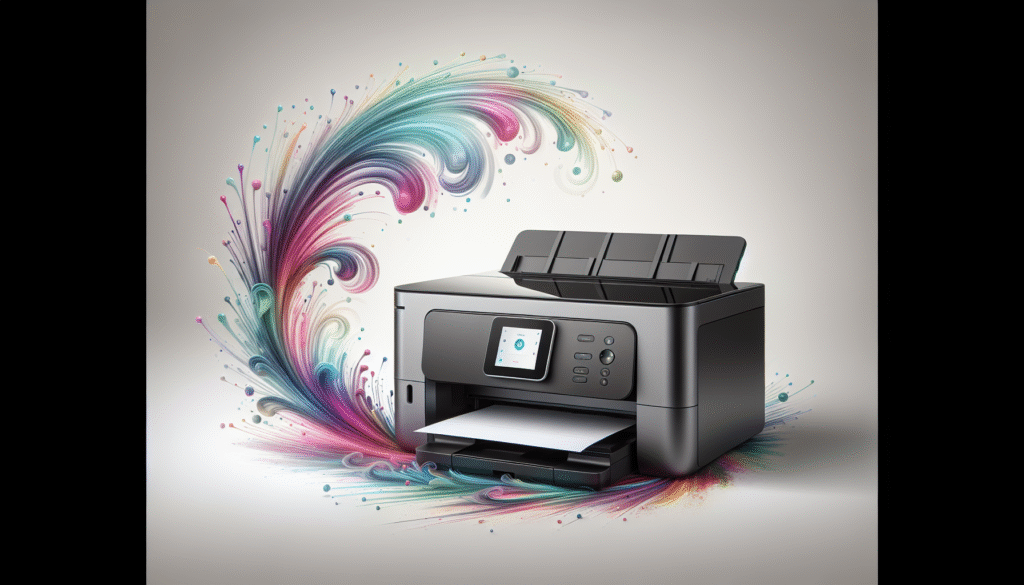Have you ever felt the frustration of seeing your colors misaligned or your designs faded after going through the dye-sublimation process? We’ve been there too. Dye-sublimation printing can be a fantastic way to create vibrant, high-quality designs on a variety of materials, but it’s not without its pitfalls. Today, we’re going to chat about some of the most common mistakes we all tend to make when starting with dye-sublimation printing and, of course, how we can avoid them. Our aim is to guide you through some tricky situations, offering tips from our own experiences so you can achieve the perfect print every time.

Understanding Dye-Sublimation Printing
Before diving into the mistakes, let’s clarify what dye-sublimation printing really is. This process involves using heat to transfer dye onto materials such as fabric, plastic, or paper. Essentially, dye-sublimation allows us to print images with vibrant colors that deeply penetrate the surface they’re printed on. It’s a wonderful technology, especially when we desire intricate designs on textiles or hard substrates. Understanding the basics helps us identify where things can go wrong and how to fix them.
The Science Behind the Process
Dye-sublimation might sound a bit like magic, but there’s science holding it together. The dye, originally in a solid form, gets transformed directly into a gas through heat – this skips the liquid phase entirely. This gaseous dye permeates the item being printed on, ensuring a vivid and lasting image. When everything works as it should, the result is marvelous. But when it doesn’t, well, that’s where things get a little tricky.
Common Mistakes and How to Avoid Them
Mistakes in dye-sublimation can happen at any point in the process. We’ve made a list of some typical errors below along with practical advice on how to sidestep them for a smoother experience.
Poor Image Quality
What Happens: This is when the final print appears blurry or pixelated, an outcome none of us desire.
Why It Happens: Most often, this occurs because the image resolution was too low.
How to Avoid It: Always ensure your image is high-resolution. Aim for 300 DPI (dots per inch) whenever possible. This provides more pixels, which means better detail and sharper images. We can make use of graphic design software to upscale images as needed, but remember, nothing beats starting with a quality image from the get-go.
Incorrect Color Profiles
What Happens: The colors in your print don’t match what you see on your computer screen.
Why It Happens: Different devices use different color profiles to represent colors.
How to Avoid It: Use the specific ICC (International Color Consortium) profile tailored for your printer and inks. This keeps the colors accurate. In addition, calibrating your monitor can be a game changer for consistent color management. By ensuring that your monitor displays true colors, we can reduce the unpredictability of our print results.
Misaligned Prints
What Happens: Parts of the design aren’t where they should be, resulting in unsightly and unusable products.
Why It Happens: This can be due to improper alignment of the transfer paper or the item being printed on.
How to Avoid It: Ensure that both the transfer paper and material are properly lined up before starting the print. Utilizing alignment tools like rulers or grids can help us get a better visual alignment. Double-checking the setup can save us time and material expenses down the road.
Inefficient Heat Settings
What Happens: The print doesn’t transfer well, or colors appear washed out.
Why It Happens: Incorrect temperature or time settings during the heat transfer process.
How to Avoid It: Rely on the guidelines provided by the printer and heat press manufacturers for optimal settings. Sometimes, running a test print can reveal the best settings tailored to our specific batch of materials and equipment.
Incorrect Pressure Application
What Happens: Portions of the print might appear faded or incomplete.
Why It Happens: Uneven or incorrect pressure during the heat press phase.
How to Avoid It: Adjust the pressure according to the materials being used. Harder substrates might need more pressure compared to softer fabrics. Being consistent in applying pressure across the item prevents unwanted disparities in our prints.
Moisture Mishaps
What Happens: Moisture in the material can lead to blurry images or color bleeding.
Why It Happens: Materials aren’t always dry when we think they are.
How to Avoid It: Always pre-press the item to evaporate any moisture. It’s a simple step, but it helps in ensuring that the surface is perfectly ready for the transfer process.

The Importance of Calibration and Testing
Let’s talk about the silent yet crucial step many of us might overlook: calibration. Calibration ensures that all tools in the dye-sublimation process are working harmoniously together. It includes calibrating our monitors, printers, and heat presses to ensure that the colors, alignment, and transfers are as precise as can be. It’s akin to fine-tuning a musical instrument; the better it’s done, the more harmonious the outcome.
Testing, Testing, One, Two, Three
To avoid unwelcome surprises, we can’t stress enough the value of running test prints. These allows us to catch discrepancies in color, alignment, and other variables before committing to the final print. It’s like doing a dress rehearsal—we always want to ensure everything’s in place before the main event.
Monitoring and Maintaining Equipment
Our equipment is as crucial as our technique. Regular maintenance and monitoring ensure that our machines function optimally. It extends the lifespan of our equipment, and in turn, the quality of our prints remains consistently high. Routine checks, cleaning, and calibration should be part of our regular workflow.
Printer Maintenance
Ink clogs or misalignments can throw any of us off our game. Ensure that the printer heads are cleaned regularly and that the cartridges are fitted correctly. A well-maintained printer is a reliable one.
Heat Press Care
For the heat press, we should frequently check the platen’s temperature accuracy and pressure distribution. Uneven heat can cause multiple issues, including variations in color transfer. Simple tasks like ensuring the platen is clean and free of any residue can also prevent unwanted marks on the final prints.
Choosing the Right Materials
In the dye-sublimation world, not all materials are created equal. The choice between different types of fabrics or substrates can make a huge difference in the final result. Polyesters and polymer-coated items are our best friends here. They hold the dye better, resulting in more vibrant and durable prints. Conversely, natural fibers like cotton aren’t compatible with dye-sublimation unless pre-treated.
Fabric Considerations
When dealing with fabrics, consider the finish—glossy, matte, or satin—as each will render colors and designs differently. Embarking on small test swatches can provide a clear picture of what the final product will look like, aiding us in making informed choices beforehand.
Substrate Selection
For those of us looking to print on hard substrates—think mugs, plates, or phone cases—choosing items that are specifically designed for dye-sublimation ensures that the print adheres well and the colors pop as intended.
Tailor-Making Our Workflow
Developing a consistent workflow can save us time, resources, and energy. Whether we’re printing a one-off design or handling a large batch, having a routine allows us to function effectively. From preparing our design and choosing the appropriate materials to calibrate machines and performing the final press, knowing each step well allows for more creative space and less room for error.
Setting Up for Success
Preparing a checklist can simplify our process considerably. We can jot down steps like checking material compatibility, calibrating our equipment, and selecting the correct profiles and settings based on the project at hand. Much like baking or crafting any masterpiece, preparation is half the battle won.
Staying Updated with Trends and Techniques
As with any tech-driven field, dye-sublimation printing evolves. Staying informed of new methodologies, tools, or even shifts in material options can keep our work fresh and efficient. Engaging with online forums, communities, or workshops can provide us with invaluable insights and skills that align with industry shifts.
Engaging with the Community
Nothing beats learning from others who have been there and done that. Sharing tips, asking questions, and participating in dye-sublimation discussions allow us to grow, innovate, and refine our crafts, ensuring we stay ahead in a vibrant and ever-evolving field.
Conclusion
Dye-sublimation printing, while intricate, offers a rewarding canvas for creativity and practicality when done right. By recognizing potential mistakes and taking proactive steps, we can transform each challenge into an opportunity to refine our skills. Armed with the right knowledge and tools, our printing endeavors can truly soar, yielding results that are not only visually stunning but also enduring testaments to our craftsmanship. Let’s embrace these insights and keep pushing forward with confidence and flair in every print we bring to life.
